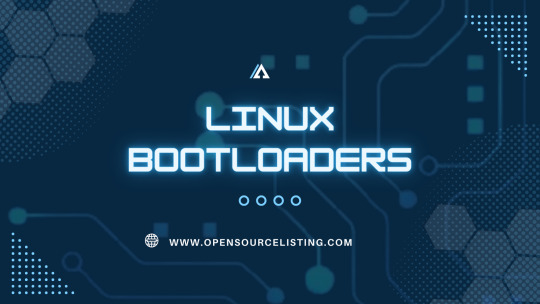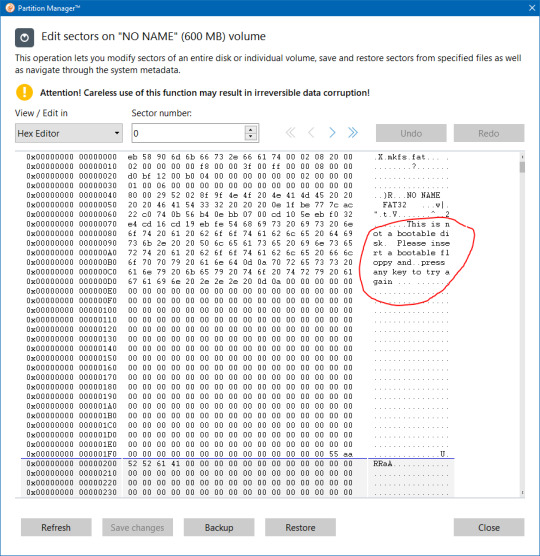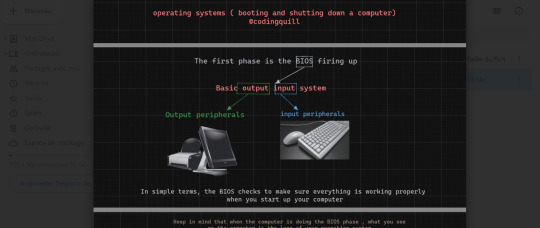#Linux Bootloaders
Explore tagged Tumblr posts
Text
Top 6 Linux Bootloaders for System Management
Linux Bootloaders Linux bootloaders are essential pieces of software responsible for initiating the boot process of a Linux-based operating system. They serve as intermediaries between the computer’s firmware and the Linux kernel, helping load the kernel into memory and initialize the hardware. Linux offers various bootloaders, with GRUB and GRUB2 being the most popular, known for their ability…

View On WordPress
0 notes
Text
decided to give myself a treat and installed arch linux again
#only took 40 mins this time!#that's to root login screen#still had some config but at that point it's actually installed#did not forgor the bootloader or network manager this time#this is fun but i do wish arch had an arm variant#i know there's arch linux arm but that's a distro not really arch itself#and i simply cannot be bothered to figure out how to get it installed in a vm that expects iso images to live boot into#lizabeth talkabeth#linuxposting
6 notes
·
View notes
Text

Shoutout to Linux for being capable of telling me when I need to insert a bootable floppy disk, instead of booting from my EFI system partition.
5 notes
·
View notes
Text

for the first time since upgrading to win11, i finally got my beautiful boot menu back! (after tons of research and terminal typing ofc)
#tinkering#grub#bootloader#customization#grand unified bootloader#linux#windows 11#aesthetic tech#nerd stuff
12 notes
·
View notes
Text

normal windows
#windows#windows 10#windows 11#debian#linux#KDE Plasma#foss#FOSS#okay i just installed debian but the grub bootloader seems to have locked me out of my windows drive#i can still access my files though
5 notes
·
View notes
Text
deep deep breath. *searches "how to add freeBSD to grub config"*
#I never learn do I?#all these OSes are like “why does everyone like Linux better than us?”#well I'll tell you one thing when I set up linux with a convenient installer it uhhhhh asks if I want to install a bootloader so it uh works
0 notes
Text
WARNING: Hard boiling Xiaomi/
Yup that's a very controversial title but let me explain. Also it's not COMPLETELY shit you'll see.
So the begining
Basically, my old phone died recently. So rest in peace Samsung Galaxy J6 2018 Custom rommed that did a boot loop he never recover from-
So the thing is I destroyed my wallet and bought a new one. Saw good reviews online, so came to a store and chose it. First mistake.
The first shit
So it's a Xiaomi Redmi Note 13. It's a pretty decent phone in term of specs with cool cpu and 8GB of RAM and 256 of ROM… Like it's OKAY. It came with MiUI. Which is basically their own OS.
I immediately updated to HyperOS, which was the new version of MiUI. After that i just… used it like a normal person UNTIL!
The day i got ads for changing my wallpaper.
I changed. My wallpaper. By the way it was a drawing of Atlas my beloved moth Squidinu i love you kfjddjfdkfjdkf
So like… Opened Google photo, selected it, got "Set as wallpaper" and then SURPRISE M.THER F.CKER. (Was for temu btw)
I was like "bro what" Cause' i thought i had opened something weird or anything well NOPE The app was "Themes". Then it just randomly closed that's an issue too.
So! Opened settings, got in "Themes and look" THEN SURPRISE ANOTHER AD!
Useless to add that, for some reason, THEMES WHERE PAID. EVERYTHING IN THIS (duck) (butt) APP STORE WAS 1€. (Nope it's not made by Electronics Arts.)
I said (duck) off imma made my own one. So downloaded KLWP (which is some cool app to make custom animated wallpapers and stuff) and enabled it. Didn't work. Why? AUTHORIZATION """""refused""""" for my """"""security""""""
We're talking about reading the number of notifications i have.
So yea that didn't work either.
So, duh, imma try to remove the bloatware.
Spoiler i can't it just says "nuh uh" and pops out some random error.
XDA forums.
So! Since this thing was going to kill me! I decided i should install a GSI! (Cause' for some reason no custom roms were out yet you'll see why later)
SO! Unlocked OEM, Check Installed SHIZUKU, Check Downloaded LeafOS, Check Bootloader unlocked, HUH OH! NUH UUH!!
Usually to unlock the bootloader, you have to use a app for Microsoft Windows, which is already a problem since i use linux and i can only imagine what kind of things OSX (Mac) users have to go through, then you plug it in, open fastboot, (Which is an mode on android that allows you to edit partitions using commands) and then "Error! unauthorized!"
Well the issue was easy, i had to open settings and link my developer account to the phone to unlock bootloader!
The result: Nope.
I think you might have expected it but that didn't worked. At all.
The page in settings shows up some error in Chinese. Which apparently translated (Thanks Gemini) says something like "You need to validate your account on community app"
So i tried.
Installed the VERY sketchy "Mi !NEW HOME! Community App" (that's the actual name on the G Play store.) and logged in, settings, "Unlock boot loader".
Yup… Umm…
"You… " erm. "You have to wait until 8/8 (mm/dd) at 00:00 (UTC+8) to try again."
So i did.
"You have to wait until 8/9 (mm/dd) at 00:00 (UTC+8) to try again."
…Seriously?
Waited 2 days. For nothing.
You see why nobody makes custom rom? Cause' xiaomi is so buggy that you can't even unlock boot loader with THEIR OWN TOOLS.
Honestly, i'm not the kind of person to usually roast something like this, but… Seriously. I didn't even mentioned the translation errors everywhere, the app icons, the bloatware�� Even the whole OS looks like ripped off Apple iOS!
So yea. Sorry Xiaomi but right now, i hate you.
So i'll try again tonight and check if that works, even if right now i need a tall buff guy to hug me from behind and hold me in place so i dont use PSI Teleport ß into their office and kill everyone using Sharpshooter and Ricoshots. (P rank)
#xiaomi#redmi#redmi note 13#android#customrom#twrp#hate#bootloader#linux#idkhelpme#imgoingtokms#whyareyoureadingthis#help#problem#life#choice#aaaaaaaaa#megalovania tudududududud#was that the bite of 87
0 notes
Text

shim Bootloader mit Risiko "hoch"
Update inzwischen verfügbar
Der Open Source Linux Bootloader "shim" enthält eine Sicherheitslücke, mit der Angreifer eigenen Code einschleusen können. Die Warnung CVE-2023-40547 (CVSS 8.3, Risiko "hoch") beschreibt die Gefahr, dass bei einem solchen "Man in the Middle" Angriff in Speicherbereiche außerhalb des allokierten Bereichs geschrieben werden kann (Out-of-bound write primitive). Damit kann das ganze System kompromittiert werden.
Der einzige Zweck von shim als eine "triviale EFI-Applikation" ist der, dass damit auf handelsüblichen Windows-Computern auch andere vertrauenswürdige Betriebssysteme mit Secure Boot zu starten sind. Microsoft macht es mit SecureBoot und seinen EFI/UEFI Bootloadern anderen Systemen weiterhin schwer als System neben Windows installiert zu werden.
Ein Update auf shim 5.18 korrigiert die Sicherheitslücke und repariert auch weitere Schwachstellen. So war erst im Dezember 2023 eine Lücke im Secure-Boot auf BIOS-, bzw. UEFI-Ebene unter dem Namen "LogoFAIL" bekannt geworden.
Mehr dazu bei https://www.heise.de/news/Bootloader-Luecke-gefaehrdet-viele-Linux-Distributionen-9624201.html
Kategorie[21]: Unsere Themen in der Presse Short-Link dieser Seite: a-fsa.de/d/3yU Link zu dieser Seite: https://www.aktion-freiheitstattangst.org/de/articles/8678-20240210-shim-bootloader-mit-risiko-hoch.html
#Microsoft#Windows#Diskriminierung#Ungleichbehandlung#OpenSource#Linux#Bootloader#UEFI#Cyberwar#Hacking#Trojaner#Verbraucherdatenschutz#Datenschutz#Datensicherheit#Datenpannen
1 note
·
View note
Text
If the problem is cause by Microsoft themselves and I can't bypass it their offices WILL explode, personally
With each passing moment I spend having pc problems I bet 0.0001% more annoyed at Microsoft. When it reaches 100% their office will explode. This will not take as long as it might seem
#Copilot bloatware#Artificial language limits that you have to pay to remove in certain versions#Not supporting any controllers but XInput for Xbox#Changing the bootloader so that it prevents you from having Linux instalations accesible from the Windows Bootloader#etc#at least all of these have workarounds with varying degrees of complexity#let's hope it stays like that
8 notes
·
View notes
Text
On Keeping Time
To run a simple program, a computer needs some kind of storage, and some kind of input/output device. To run a simple operating system, a computer will also need some random-access memory for holding onto information temporarily. To run a sophisticated operating system that supports many users and programs reliably, a computer will also need some way to make sure one user doesn't hog resources and prevent other users' programs from running.
My Wrap030 homebrew computer currently has a flash ROM which holds a bootloader program from starting other programs from disk. It has 16MB of RAM. It has 9 total serial ports for I/O. It just needs that last thing to be able to run a sophisticated operating system.
I've written before about how computers can share a single processor between multiple users or programs. The simplest option is to have each program periodically yield control back to the system so that the next program can run for a little while. The problem with this approach is if a program malfunctions and never yields control back to the system, then no other program can run.
The solution is to have an external interrupt that can tell the CPU it's time to switch programs. Each program can be guaranteed to have its chance to run because if a program tries to run too long, that interrupt will come to force a switch to the next program.
The way this is typically accomplished is with a periodic timer — ticking clock that interrupts the CPU regardless of what it's doing.
And that's what my Wrap030 project is missing. I need a timer interrupt.
The catch is, my system has always been a little fragile. I have it running well right now with three expansion boards, but there's always a risk of it being very unhappy if I try to add another expansion board. If I could somehow pull a timer interrupt out of what I already have, that would be ideal.
Nearly all of the glue logic pulling this system together is programmable logic in the form of CPLDs. This gives me the flexibility to add new features without having to rework physical circuitry. As it happens, the logic running my DRAM card currently consumes under half of the resources available in the card's CPLD. It also has several spare I/O pins, and is wired to more of the CPU bus than any other chip in the system.
So I added a timer interrupt to my DRAM controller.
It is very minimal — just a 16-bit register that starts counting down every clock cycle as soon as it's loaded. When the timer gets to 1, it asserts one of those spare I/O pins to interrupt the CPU.
And all it took was a couple bodge wires and a little extra logic.

I put together a quick test program to check if the timer was running. The program would spin in a loop waiting to see if a specific address in memory changed. When it changed, it would print out that it had, and then go right back into the loop. Meanwhile, the interrupt service routine would change the same address in memory every time the timer expired.

This is great! It was the last significant piece of hardware I was missing to be able to run a proper operating system like Unix or Linux — which has always been a goal of the project. While I still have much to learn before I can attempt to get a proper OS running, I can still put this new timer to use.
I had previously built my Multibasic kernel to run cooperatively. Each user instance of BASIC would yield control whenever it needed to read or write to its terminal (which it does at every line while running a BASIC program, checking for the Ctrl-C stop sequence). This worked well enough, but a particularly complex BASIC program could still slow down other users' programs.
Converting my Multibasic kernel from Cooperative multitasking to Preemptive multitasking was actually fairly easy. I just needed to initialize the timer at startup, and add an interrupt service routine to switch to the next user.

(It's not really something that can be seen in a screenshot, but it's doing the thing, I promise.)
Now that I have all of the requisite hardware, I guess I need to dive into learning how to customize and build an operating system for a new machine. It's something I have always wanted to do.
35 notes
·
View notes
Text
Everyone complains about all the problems you run into when trying to do a Linux install, but without those problems you'd never get the fun understanding from solving them.
Source: I learned a lot more about bootloaders and kernels than I used to know while setting up an Arch Linux dualboot on a laptop.
Honestly the more I think about it the more I consider installing Linux to be like setting up mods for Elder Scrolls or building a model kit, where half the fun is figuring it out along the way. Having a cool OS at the end of it is just a happy accident of the process.
67 notes
·
View notes
Text
What happens when you start your computer ? ( Booting a computer )
We studied this in the lecture today, and it was quite interesting. What makes something a hundred times simpler than it is? Creating a story about it. That's why I made this super fun dialog that will help you understand it all.
I've set up a drive to compile everything I create related to the Linux operating system. Feel free to explore it for more details on the topics discussed in the conversation below. Check it out here.

Have a fun read, my dear coders!
In the digital expanse of the computer, Pixel, the inquisitive parasite, is on a microventure with Binary, a wise digital guide. Together, they delve into the electronic wonders, uncovering the secrets hidden in the machine's core.
Pixel: (zooming around) Hey there! Pixel here, on a mission to demystify the tech wonders . There's a creature named Binary who knows all the ins and outs. Let's find them!
Binary: (appearing with a flicker of pixels) Pixel, greetings! Ready to explore what happens inside here?
Pixel: Absolutely! I want the full scoop. How does this thing come alive when the human outside clicks on "start"?
Binary: (with a digital chuckle) Ah, the magic of user interaction. Follow me, and I'll reveal the secrets.
(They traverse through the circuits, arriving at a glowing portal.)
Pixel: (inquiring) What's the deal with this glowing door?
Binary: (hovering) Pixel, behold the BIOS - our machine's awakening. When the human clicks "start," the BIOS kicks in, checking if our components are ready for action.
(They proceed to observe a tiny program in action.)
Pixel: (curious) Look at that little messenger running around. What's it up to?
Binary: (explaining) That, Pixel, is the bootloader. It plays courier between the BIOS and the operating system, bringing it to life.
Pixel: (excitedly buzzing) Okay! How does the computer know where to find the operating system?
Binary: Ah, Pixel, that's a tale that takes us deep into the heart of the hard disk. Follow me.
(They weave through the digital pathways, arriving at the hard disk.)
Pixel: (curious) Huh? Tell me everything!
Binary: Within this hard disk lies the treasure chest of the operating system. Let's start with the Master Boot Record (MBR).
(They approach the MBR, Binary pointing to its intricate code.)
Binary: The MBR is like the keeper of the keys. It holds crucial information about our partitions and how to find the operating system.
Pixel: (wide-eyed) What's inside?
Binary: (pointing) Take a look. This is the primary boot loader, the first spark that ignites the OS journey.
(They travel into the MBR, where lines of code reveal the primary boot loader.)
Pixel: (in awe) This tiny thing sets the whole show in motion?
Binary: (explaining) Indeed. It knows how to find the kernel of the operating system, which is the core of its existence.
(They proceed to the first partition, where the Linux kernel resides.)
Pixel: (peering into the files) This is where the OS lives, right?
Binary: (nodding) Correct, Pixel. Here lies the Linux kernel. Notice those configuration files? They're like the OS's guidebook, all written in text.
(They venture to another partition, finding it empty.)
Pixel: (confused) What's the story with this empty space?
Binary: (smirking) Sometimes, Pixel, there are barren lands on the hard disk, waiting for a purpose. It's a canvas yet to be painted.
Pixel: (reflecting) Wow! It's like a whole universe in here. I had no idea the operating system had its roots in the hard disk.
(They continue their microventure, navigating the binary landscapes of the computer's inner world.Pixel gazes at the screen where choices appear.)
Pixel: What's happening here?
Binary: (revealing) This is where the user picks the operating system. The computer patiently waits for a decision. If none comes, it follows the default path.
(They delve deeper into the digital code, where applications start blooming.)
Pixel: (amazed) It's like a digital garden of applications! What's the enchantment behind this?
Binary: (sharing) Here, Pixel, is where the applications sprout to life. The operating system nurtures them, and they blossom into the programs you see on the screen.
Pixel: (excited) But how does the machine know when the human clicks "start"?
Binary: It's the BIOS that senses this initiation. When the human triggers "start," the BIOS awakens, and we embark on this mesmerizing journey.
#linux#arch linux#ubuntu#debian#code#codeblr#css#html#javascript#java development company#python#studyblr#progblr#programming#comp sci#web design#web developers#web development#website design#tech#html css#operatingsystem#windows 11
387 notes
·
View notes
Text








Decided to install Red Hat Linux 6.2 on my SPARCstation 5 tonight - and of course I network booted it. The bootloader and initial boot image was hosted on a TFTP server, with the installer and packages hosted over NFS.





Installation went off without a hitch and I'm put into a fresh KDE 1 environment.



Now, of course I have to do my signature anime girl-ification of the system.



Red Hat 6.2 (SPARCstation 5, 1994) and Red Hat 9 (Athlon 1100, 2002) side-by-side, to show the difference of four years of software and eight years of hardware.
#old tech#unix#sun microsystems#retro tech#linux#retro computing#retrocomputing#vintage computers#vintage technology#vintage tech
27 notes
·
View notes
Text
So, I’m a huge Linux nerd, right? I have an old laptop that I use for Linux stuff.
I spent a couple of hours last night setting up a Gentoo install, and I did pretty well. When I went to reboot, it didn’t boot into Gentoo.
You know why?
I forgot to install the bootloader.
I wasted several hours on Gentoo just to make the most rookie mistake possible.
So I just installed Arch using the script that comes with it.
Sometimes Linux sucks, man.
9 notes
·
View notes
Text
Shit what the fuck just happened? Did Windows randomly decide to overwrite grub? Both my drives seem to have the Windows bootloader on now. I can't even access the EFI partition from Windows and I'm unable to boot into Linux now?
18 notes
·
View notes
Text
linux is so strange cause i almost look forward to it breaking just for the thrill of fixing it. my laptop (Manjaro w/ GRUB bootloader) obliterated some aspect of its boot up process after an update and oh man the thrill of fixing it without using any usbs or anything.. unmatched
17 notes
·
View notes